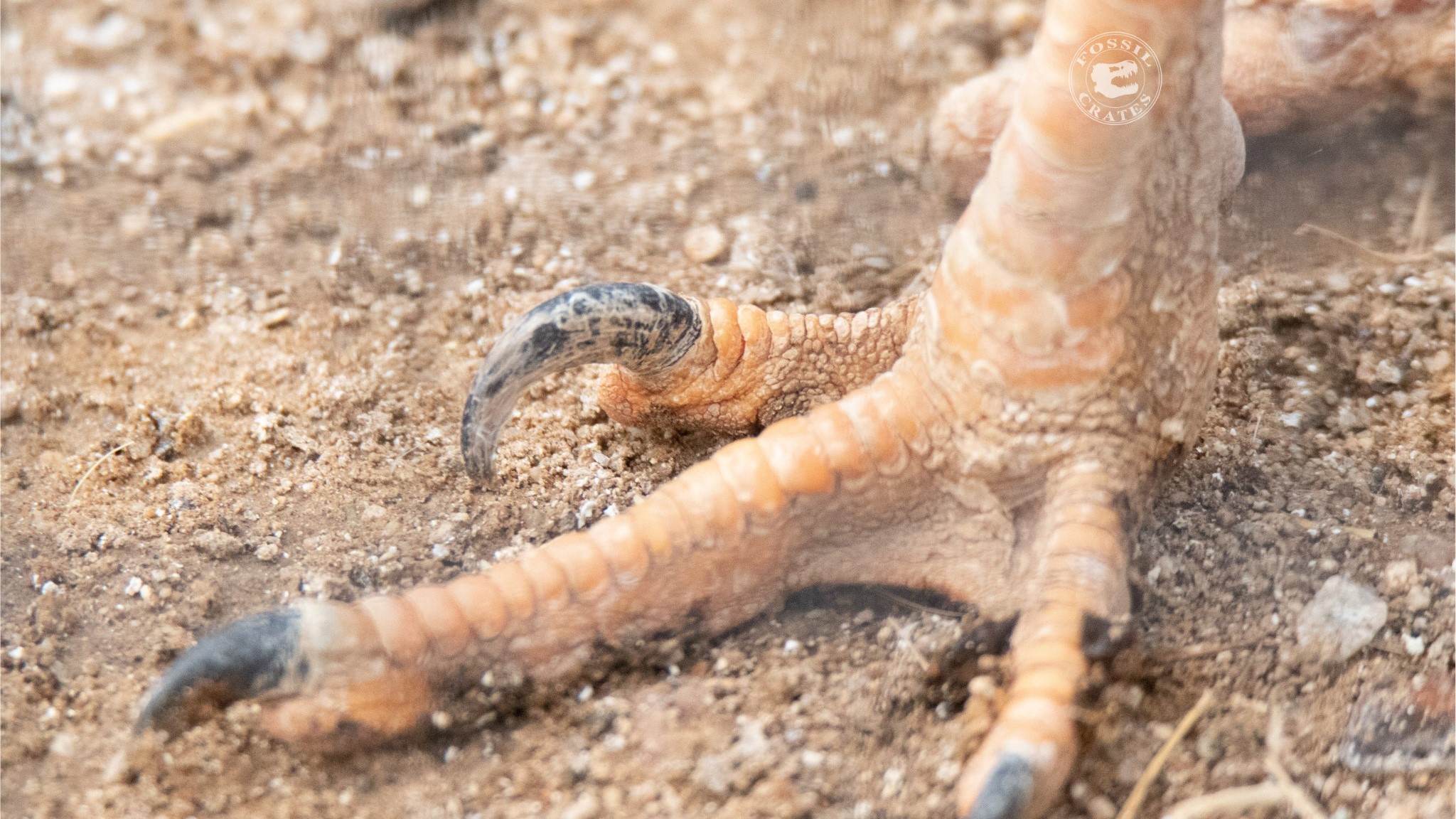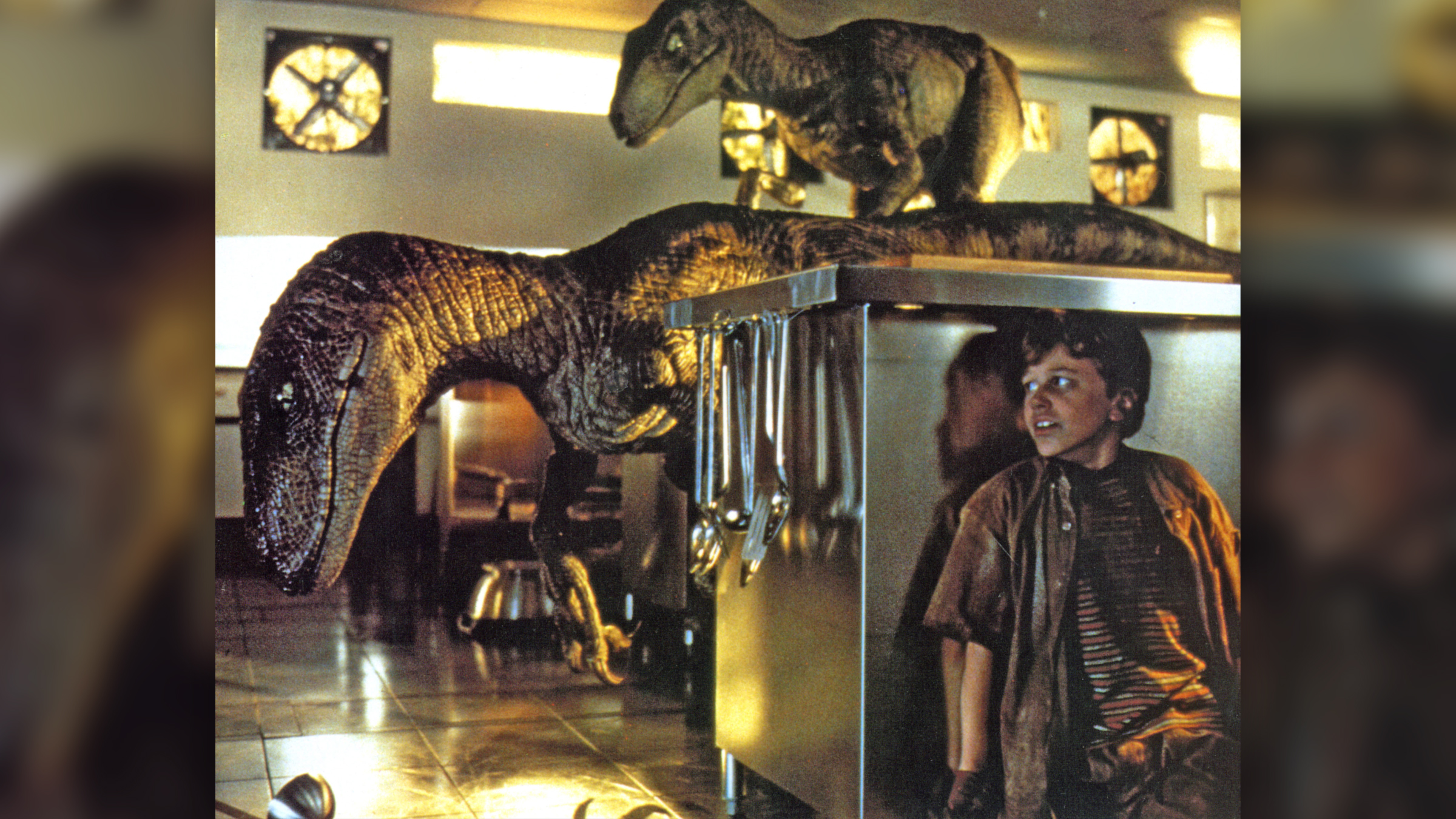Velociraptors probably didn't use their 'wicked' claws for slashing, surprising new study suggests
Unlike their portrayal in Jurassic Park, curved-clawed dinos may have used their sharp appendages to pin and grasp, not slash.

Deinonychus and its dino relatives may not have used their wicked, curved claws to slash and disembowel their victims; instead, these fearsome hunters may have used these claws to pin and grasp their helpless prey.
In new research, scientists observed the red-legged seriema (Cariama cristata), a South American predatory bird that stalks small mammals, reptiles, amphibians and insects and which has a sharp, curved claw that sits above the ground, much like Deinonychus, Velociraptor, Utahraptor and other "raptor" dinosaurs. Two captive seriemas — Ellie at the Wildlife World Zoo, Aquarium, and Safari Park in Phoenix, Arizona, and Ernie at the Tracy Aviary and Botanical Gardens in Salt Lake City, Utah — were observed pinning and grasping prey and unfamiliar objects with these sharp claws.
The observations add weight to a hypothesis first suggested by paleontologist Denver Fowler in 2011, said study co-author Brian Curtice, a paleontologist at Fossil Crates, a company that makes museum-quality fossil casts. Fowler and his colleagues argued that rather than slashing, these claws were good at grasping wriggling prey and pinning it down for easier consumption.
"This claw is not built for slashing, to paraphrase a boots-walking song," Curtice told Live Science. "It was doing something else."

Killer claw
Red-legged seriemas are one of the few living birds that have sharp, curved claws on their second digits that look much like the claws of dromaeosaurid dinosaurs, a group of feathered theropods that includes Deinonychus and Velociraptor.
Unlike the velociraptors made famous by the "Jurassic Park" franchise, actual velociraptors were turkey-size. Deinonychus or Utahraptor are closer in size to the dinos that stalked Dr. Grant in the movie. (In fact, the velociraptors in Jurassic Park are actually based on Deinonychus.) Jurassic Park also popularized the notion that these dinosaurs used their curved claws to slash at prey as big or larger than themselves, but paleontologists have long been skeptical of that idea. As it turns out, dromaeosaurid claws don't resist side-to-side force well, said James Napoli, a paleontologist and postdoctoral researcher at the North Carolina Museum of Natural Sciences and North Carolina State University who was not involved in the new study. Nor do they make great knives.
"If you're using something to cut, you usually use a straight blade, you don't use a big curved hook," Napoli told Live Science. "And it doesn't have serrations on the bottom, it's rounded, so there's not even a cutting surface."
Sign up for the Live Science daily newsletter now
Get the world’s most fascinating discoveries delivered straight to your inbox.

Paleontologists began to suggest other ways the dinosaurs could have used their claws, from climbing to pinning and grasping prey. These ideas are hard to test, since dromaeosaurids are, of course, extinct. But Curtice got the idea of using the seriema as a modern comparison one day after taking photos of the birds at the Phoenix zoo. He noticed that the "killing claw" of the seriema looked very velociraptor-like. These birds are native to grasslands in South America that would have been similar to the habitats where many dromaeosaurids roamed. And a bit of background reading showed that there had been little scientific study of how the birds used their claws.
Pin and tear
Curtice arranged the research project with the head of the zoo in Phoenix, gaining permission to go into Ellie the seriema's cage to observe her. Though the birds are only about 2.9 feet (90 centimeters) tall and weigh perhaps 4 pounds (1.8 kilograms), their claws and sharp beaks are intimidating, Curtice said.
"When you walk in the cage and they close it behind you, it's probably how an MMA fighter feels," he said.
Ellie promptly attacked Curtice's camera lens. But her keeper soon distracted her with the experimental objects, a keychain and a rubber snake. To Curtice's delight, the bird pounced on both, whacking the fake snake against a rock as if to kill it. In both cases, she used her sharp second claw to pin the objects to the ground while she tore at them with her beak. The researchers took pictures and video to document the behavior.
Curtice and his colleagues repeated the observations with the seriema Ernie in Salt Lake City, who also showed off his pinning-and-grasping skills on dead mice. The bird would pin the mouse to the ground with its claw and then rip off chunks of flesh to eat, Curtice said.
Seriemas probably aren't perfect analogues to Deinonychus and other raptors. They hold their sharp claws off the ground with a fleshy footpad, while the dinosaurs' toes were held in that position by bone. It's possible that there are some anatomical differences between the two that could change the function, Napoli said, though it's probable that both extinct dinosaurs and modern seriemas use the claws in a similar way.
To learn more, Curtice and his colleagues hope to study the black-legged seriema (Chunga burmeisteri), a bird similar to the red-legged version, to see if they also use their claws to pin and grasp. They also plan to do more detailed anatomical study using digital 3D models that can mimic the movement of limbs based on their bones.
"We know how seriemas use their feet and their claws," Curtice said, "So now we can take a three-dimensional scan of the gorgeous feet of the velociraptors and the troodontids [bird-like dinosaurs related to dromaeosaurids that also have killing claws], and look at what range of motion really allows, what could happen."
The findings were published Jan. 5 in the Journal of the Arizona-Nevada Academy of Science.

Stephanie Pappas is a contributing writer for Live Science, covering topics ranging from geoscience to archaeology to the human brain and behavior. She was previously a senior writer for Live Science but is now a freelancer based in Denver, Colorado, and regularly contributes to Scientific American and The Monitor, the monthly magazine of the American Psychological Association. Stephanie received a bachelor's degree in psychology from the University of South Carolina and a graduate certificate in science communication from the University of California, Santa Cruz.










